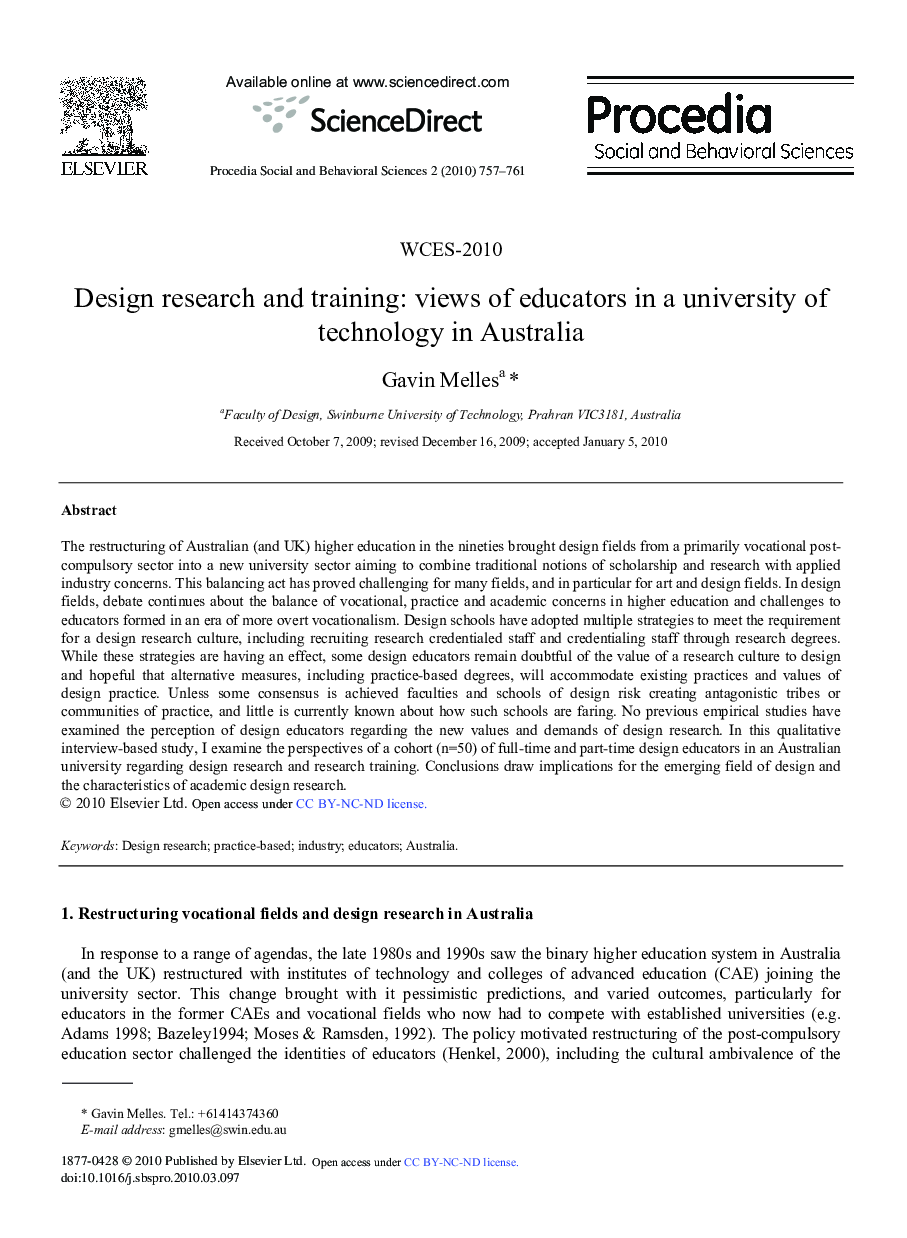| Article ID | Journal | Published Year | Pages | File Type |
|---|---|---|---|---|
| 1125496 | Procedia - Social and Behavioral Sciences | 2010 | 5 Pages |
The restructuring of Australian (and UK) higher education in the nineties brought design fields from a primarily vocational post-compulsory sector into a new university sector aiming to combine traditional notions of scholarship and research with applied industry concerns. This balancing act has proved challenging for many fields, and in particular for art and design fields. In design fields, debate continues about the balance of vocational, practice and academic concerns in higher education and challenges to educators formed in an era of more overt vocationalism. Design schools have adopted multiple strategies to meet the requirement for a design research culture, including recruiting research credentialed staff and credentialing staff through research degrees. While these strategies are having an effect, some design educators remain doubtful of the value of a research culture to design and hopeful that alternative measures, including practice-based degrees, will accommodate existing practices and values of design practice. Unless some consensus is achieved faculties and schools of design risk creating antagonistic tribes or communities of practice, and little is currently known about how such schools are faring. No previous empirical studies have examined the perception of design educators regarding the new values and demands of design research. In this qualitative interview-based study, I examine the perspectives of a cohort (n = 50) of full-time and part-time design educators in an Australian university regarding design research and research training. Conclusions draw implications for the emerging field of design and the characteristics of academic design research.
